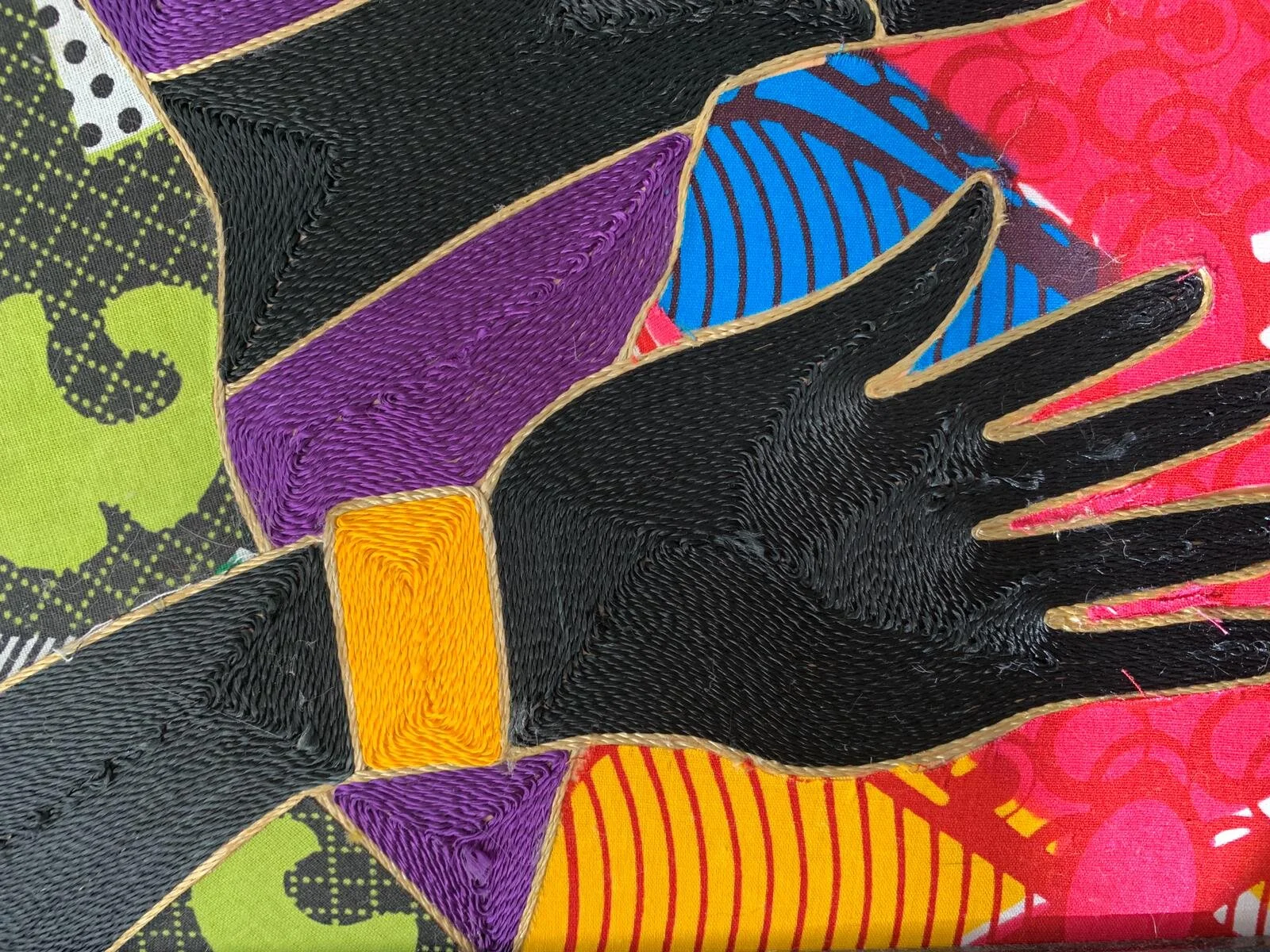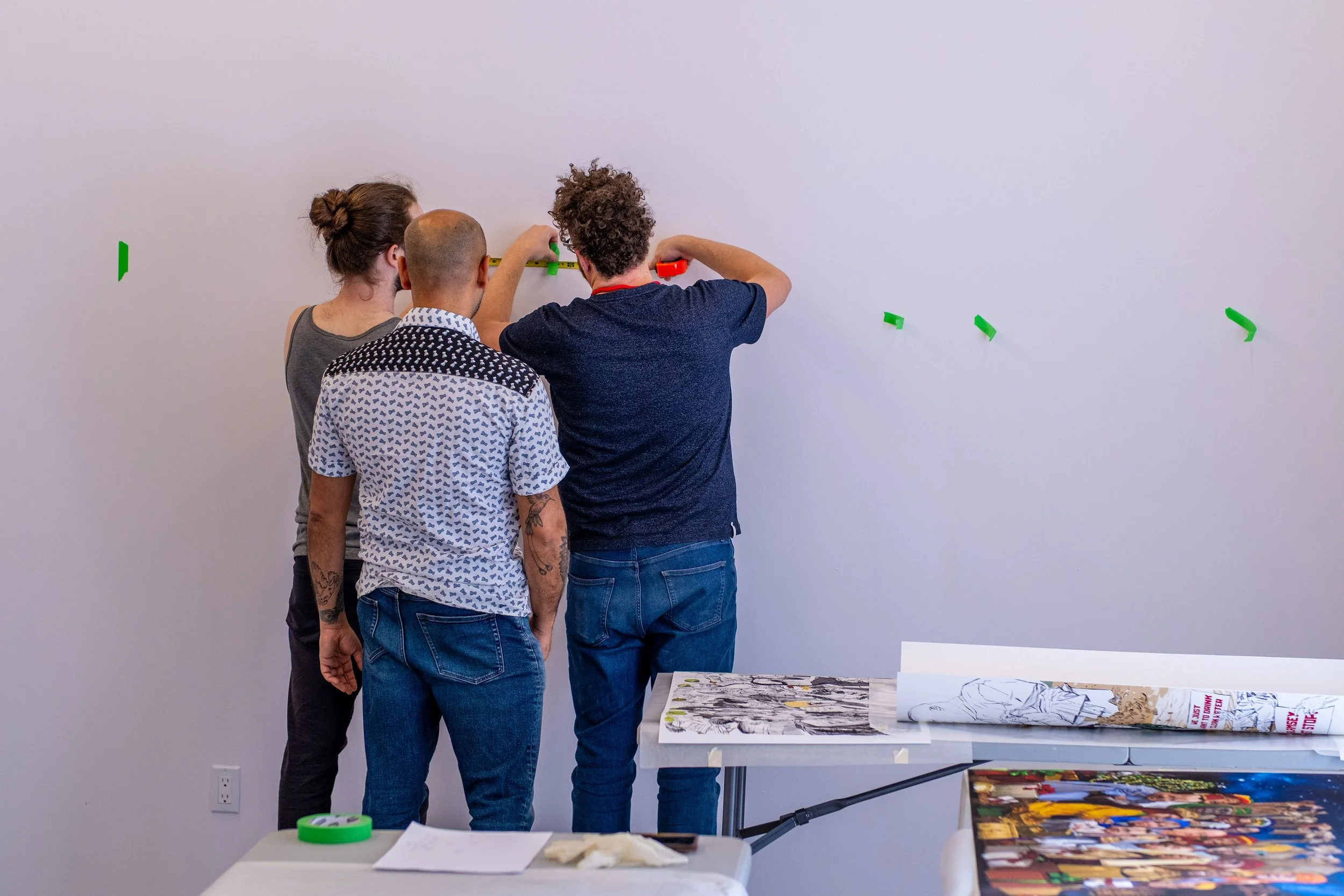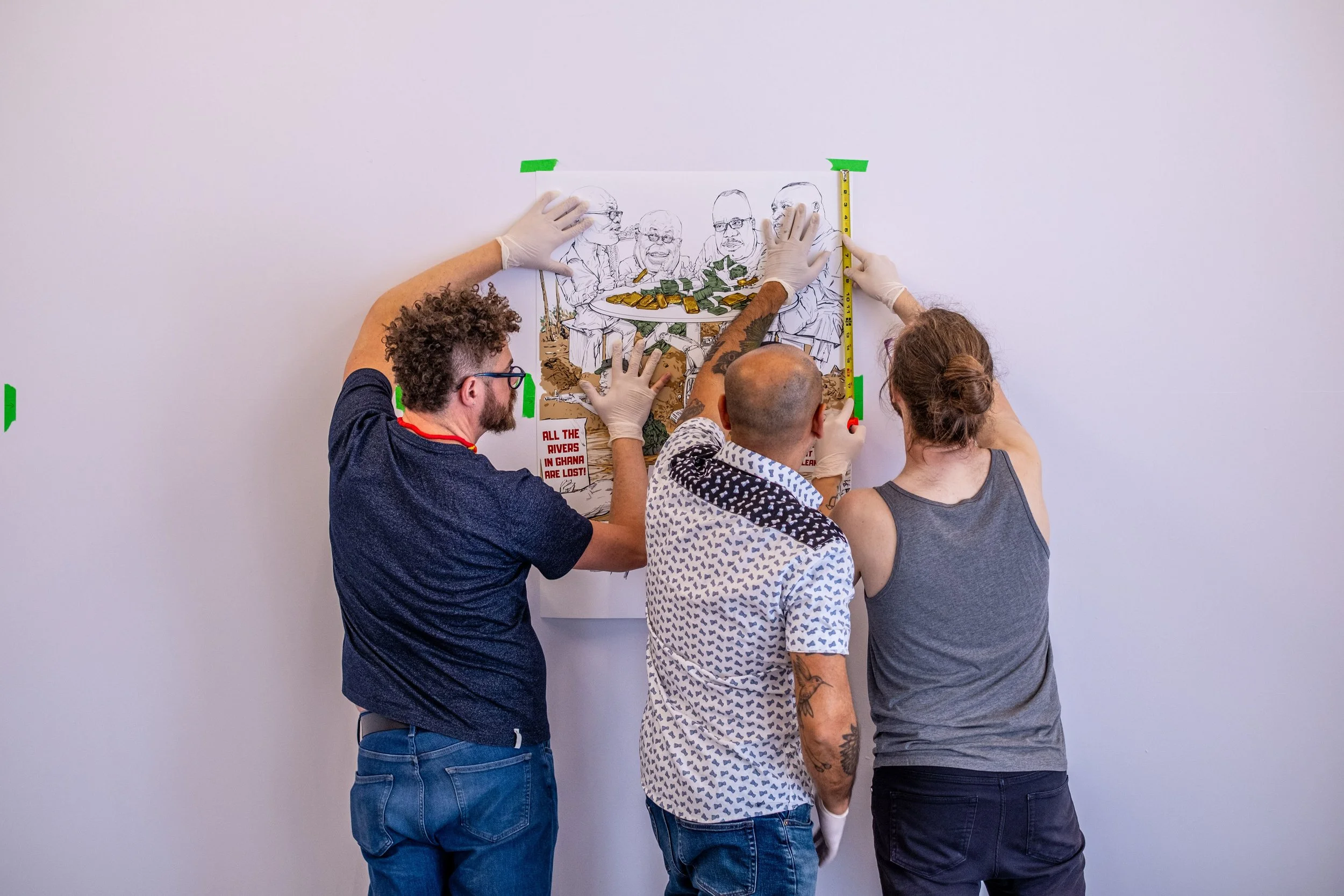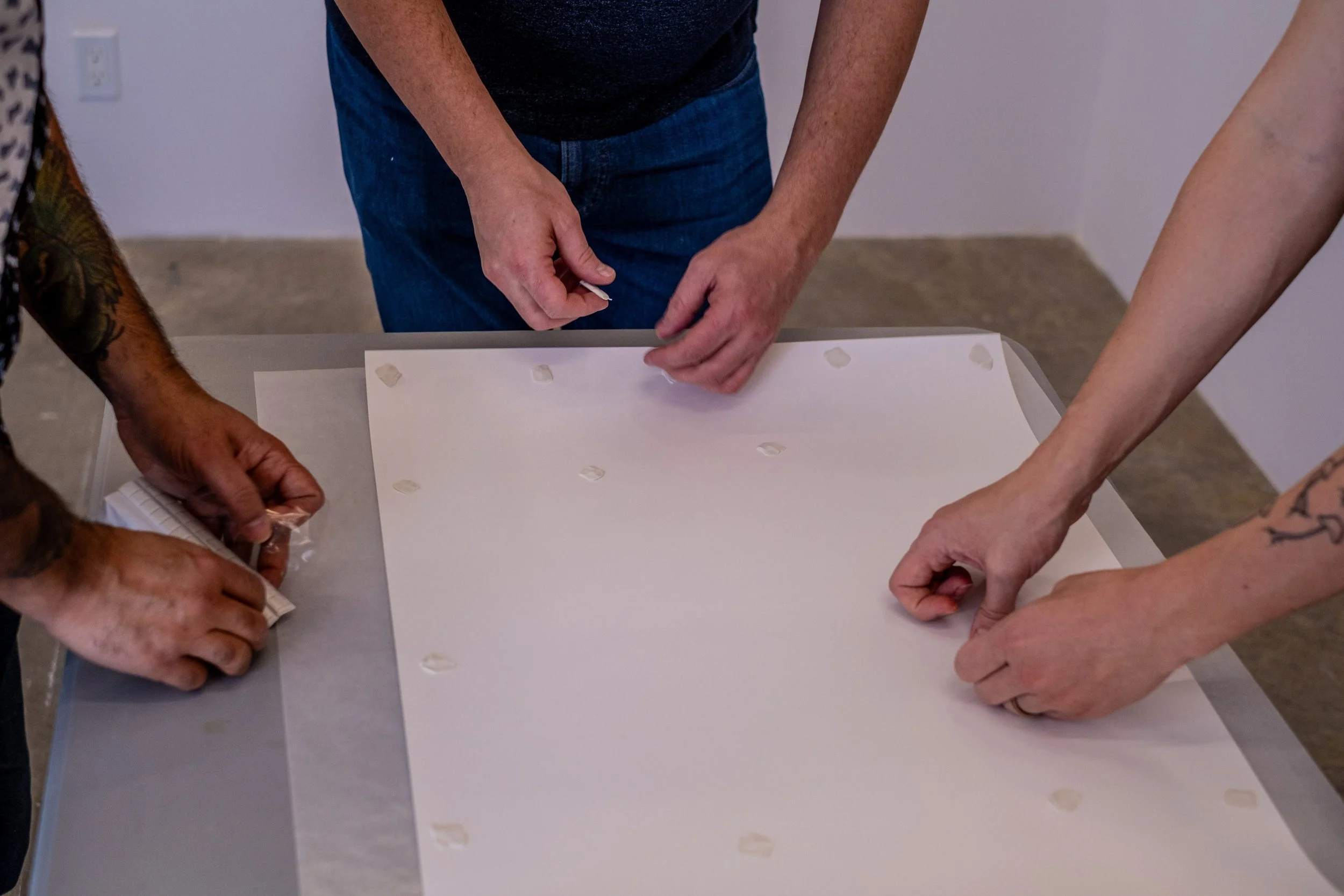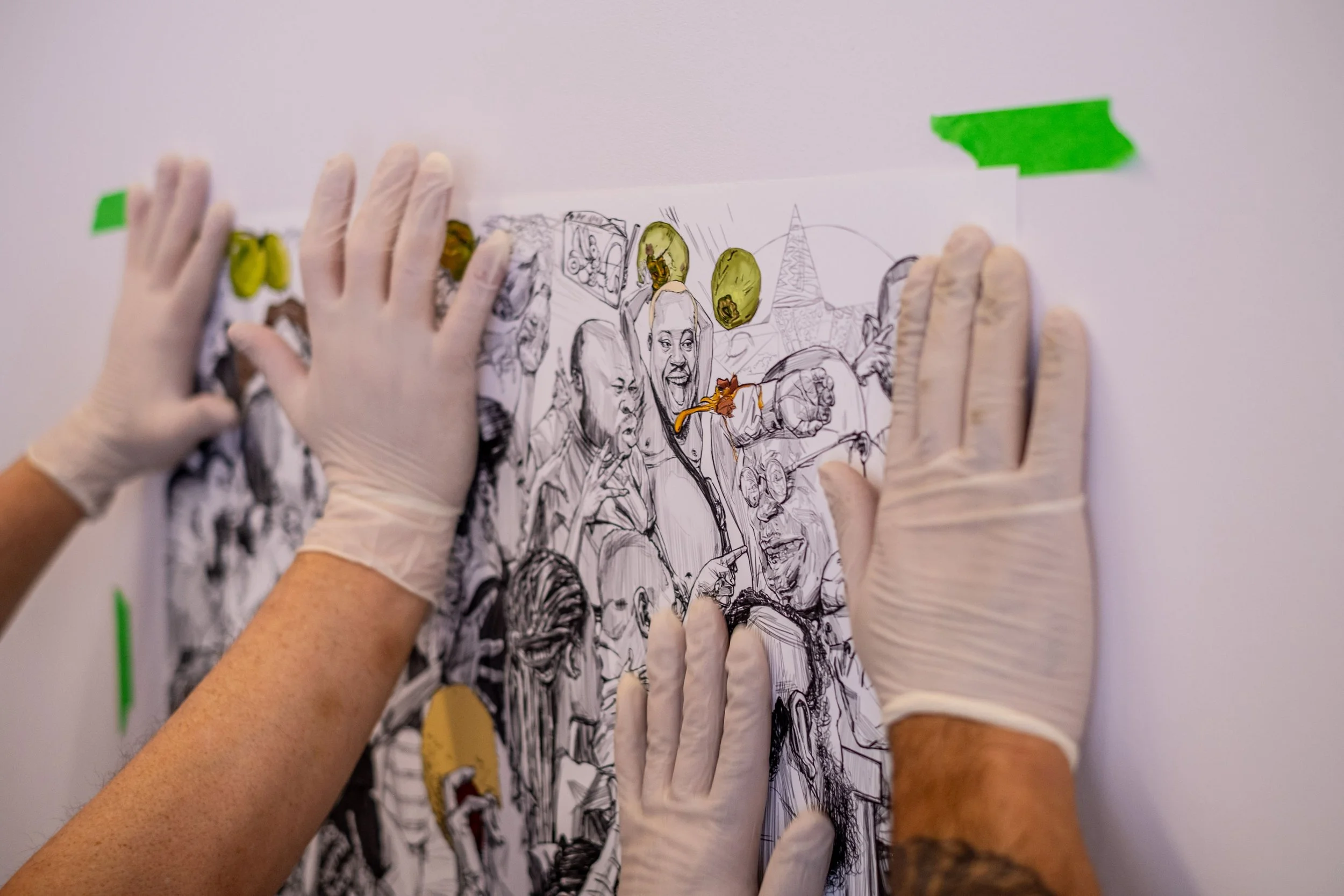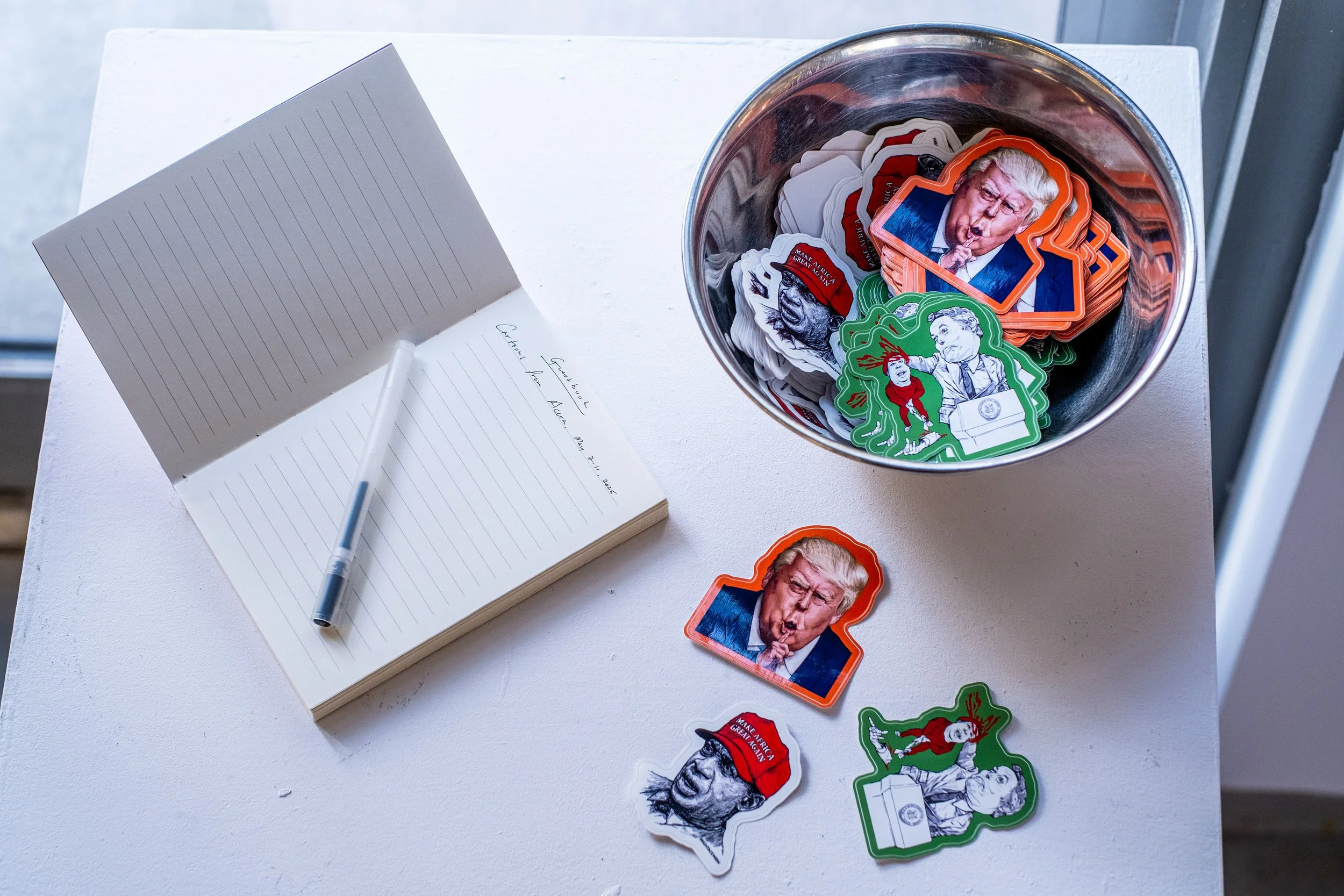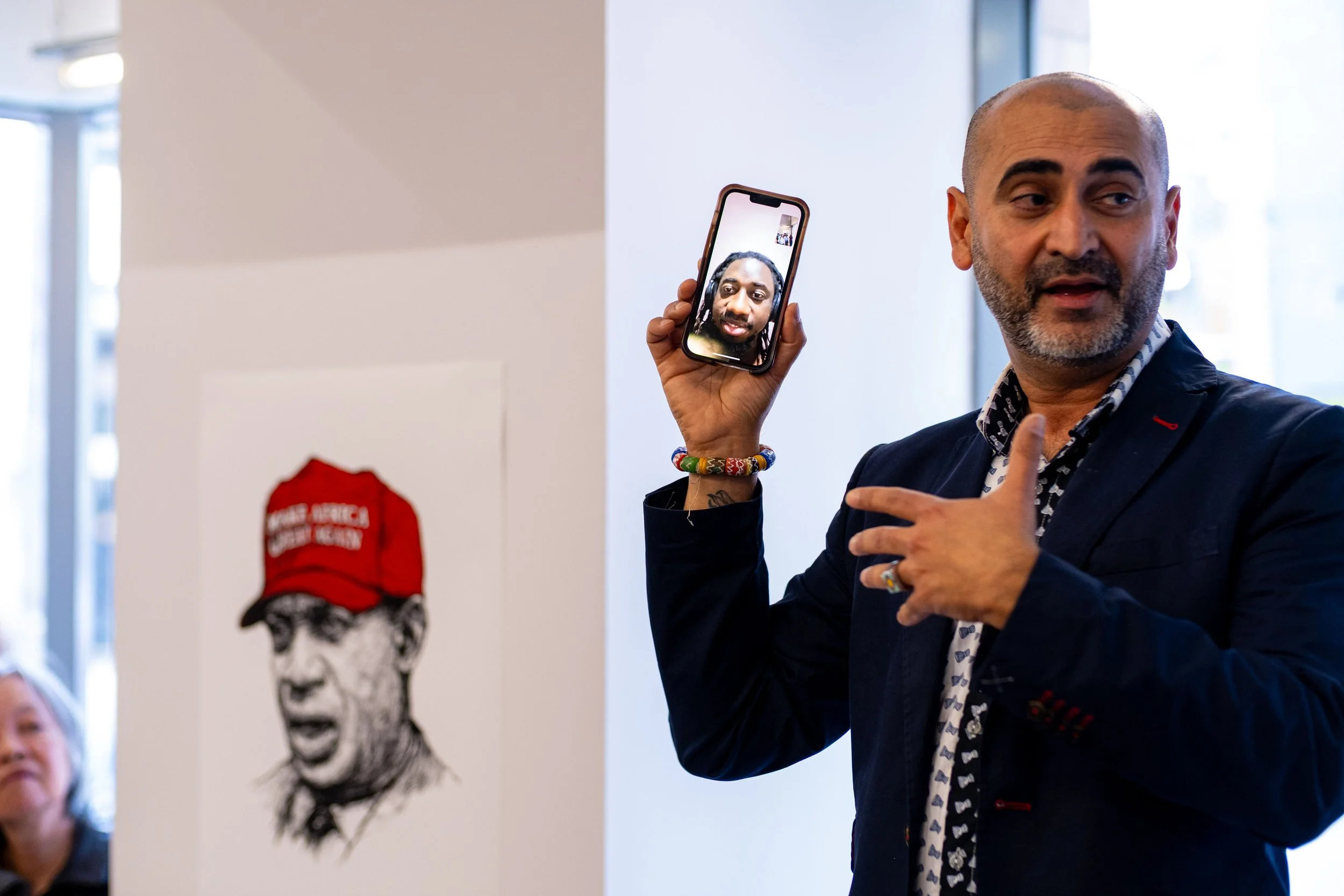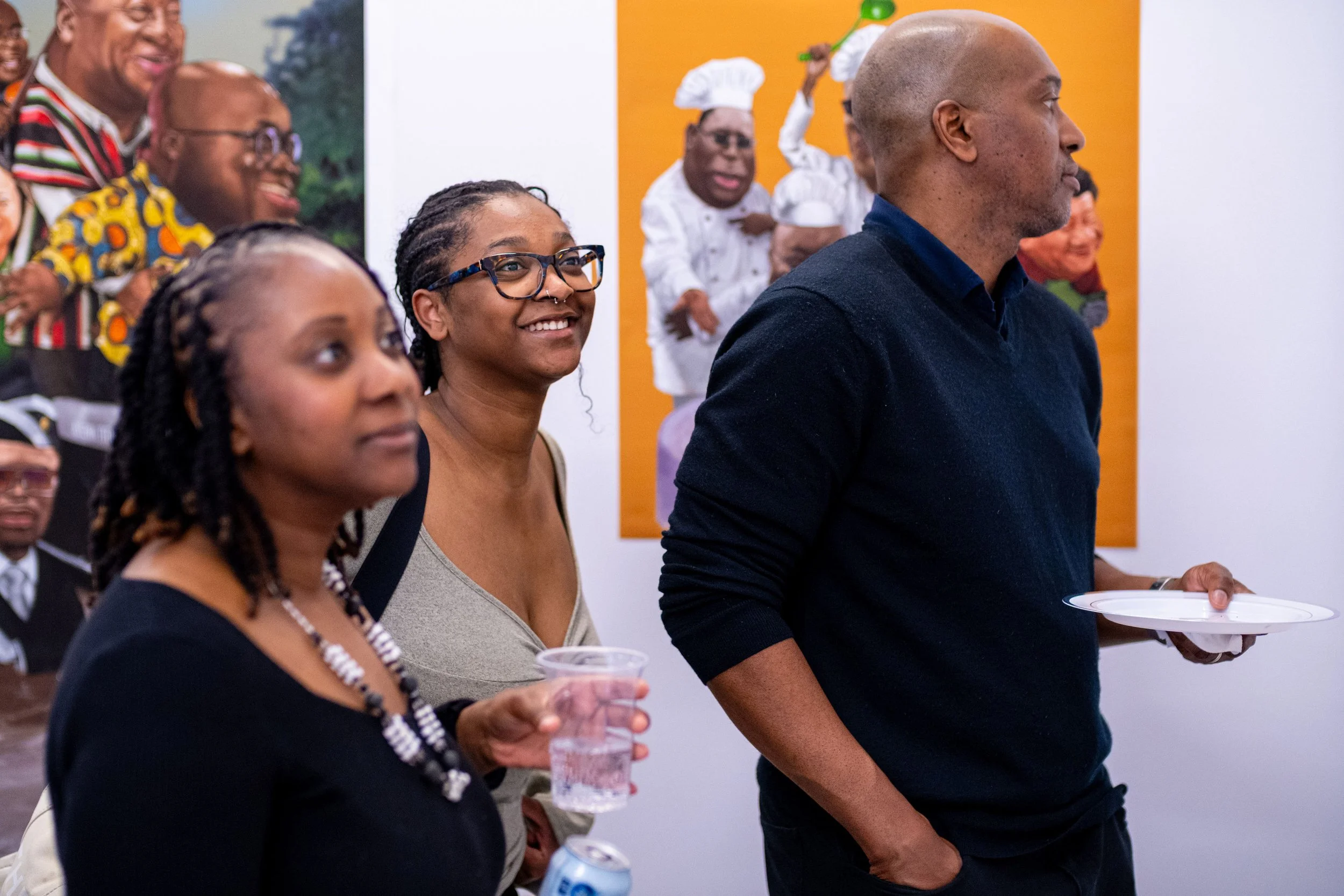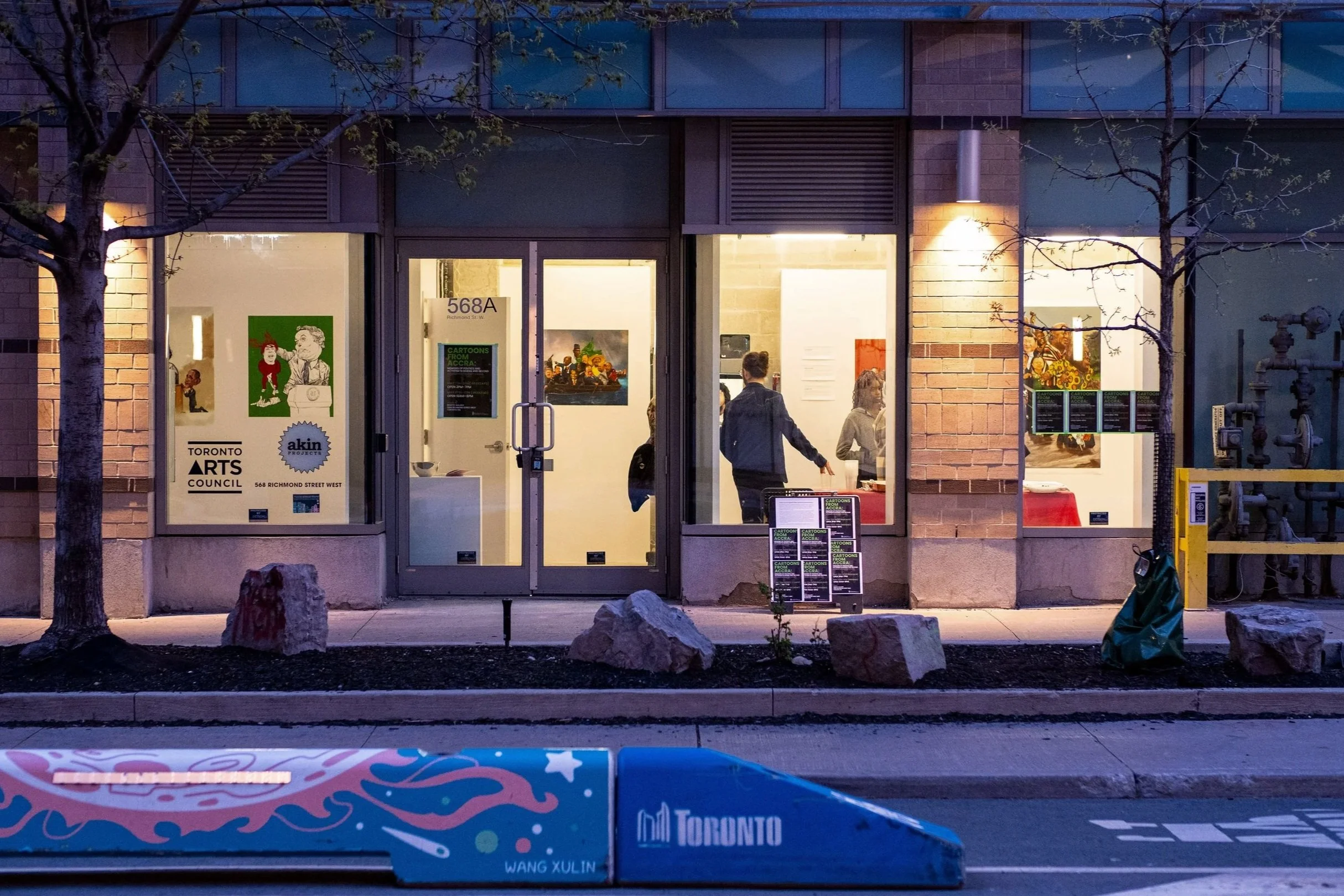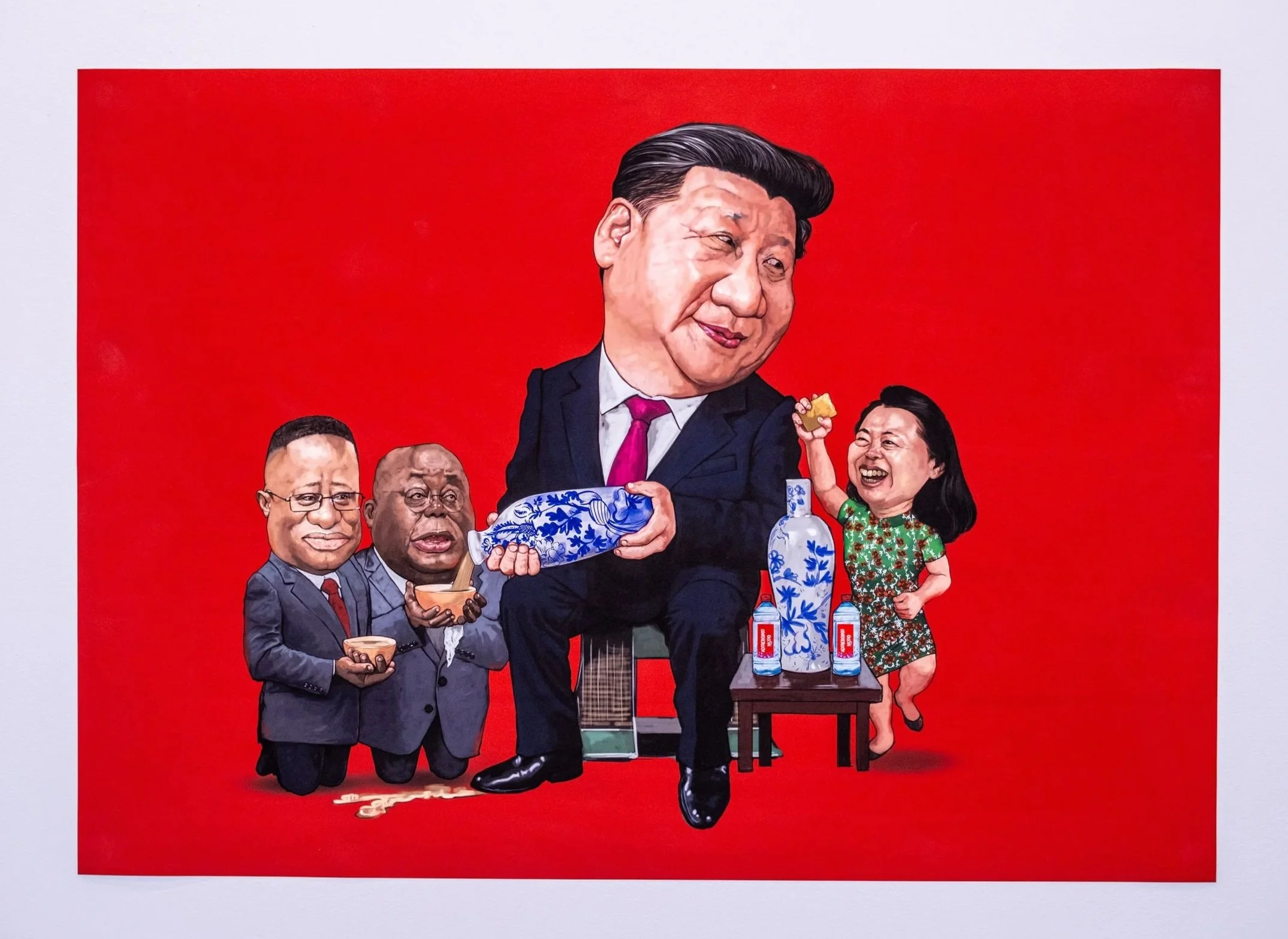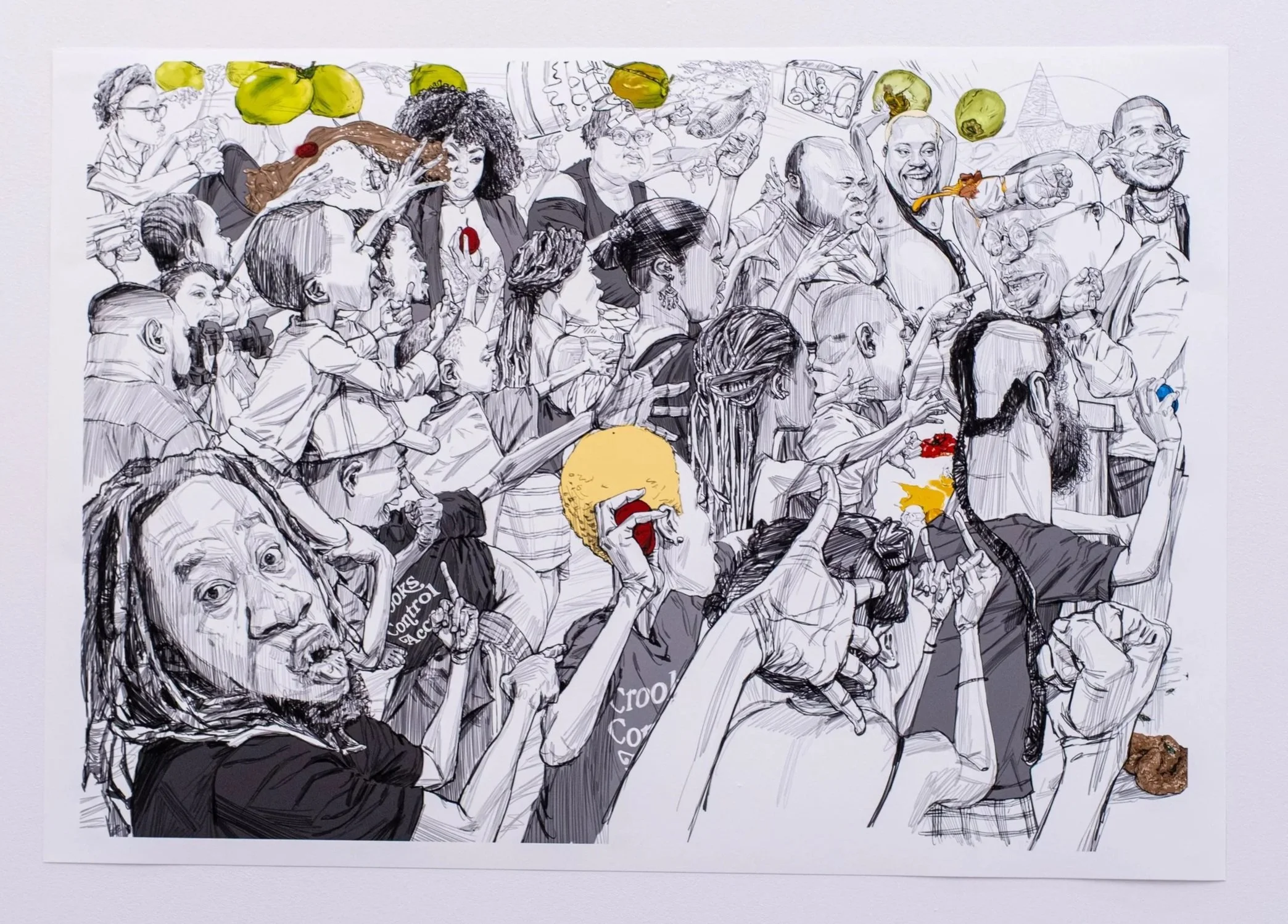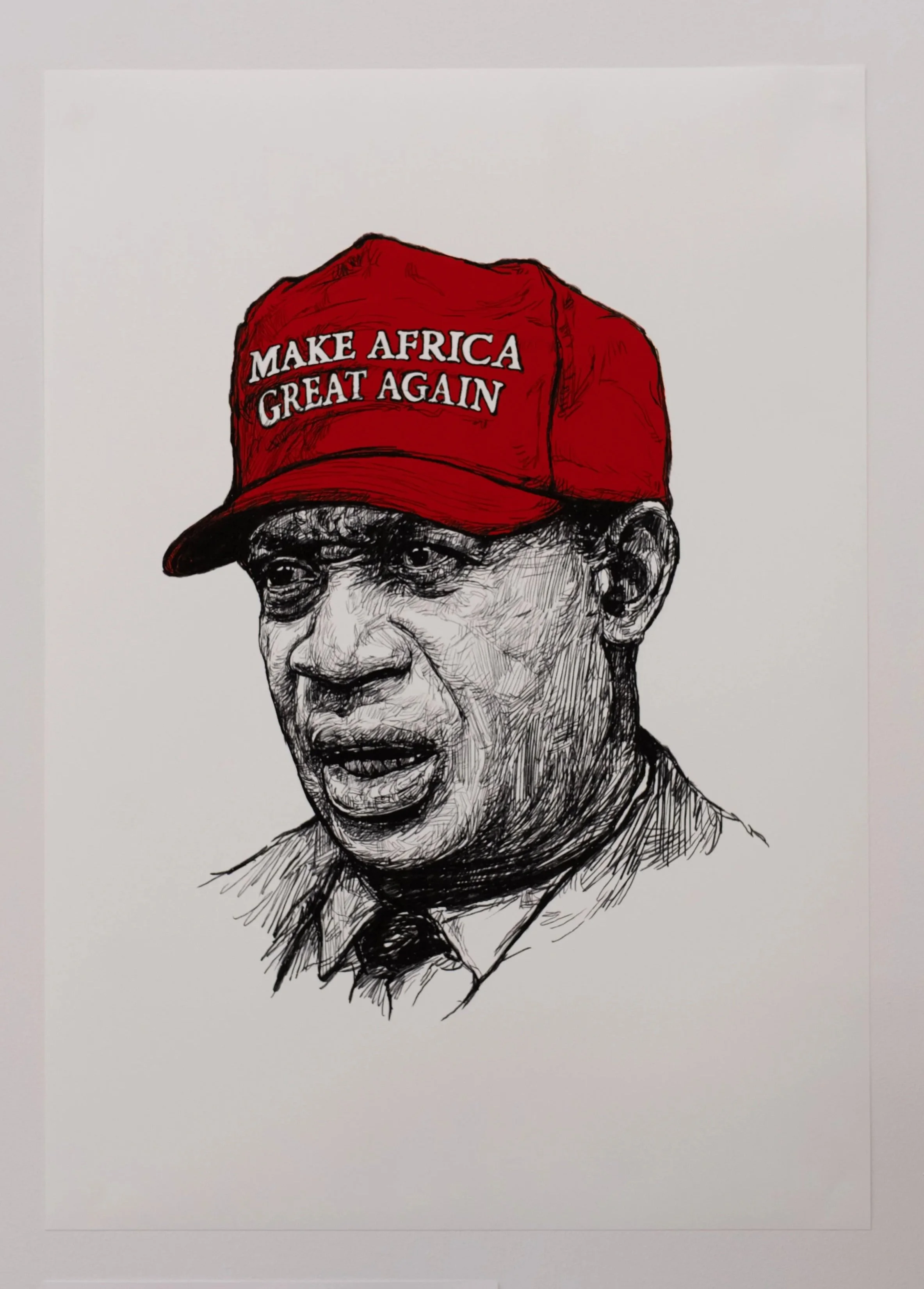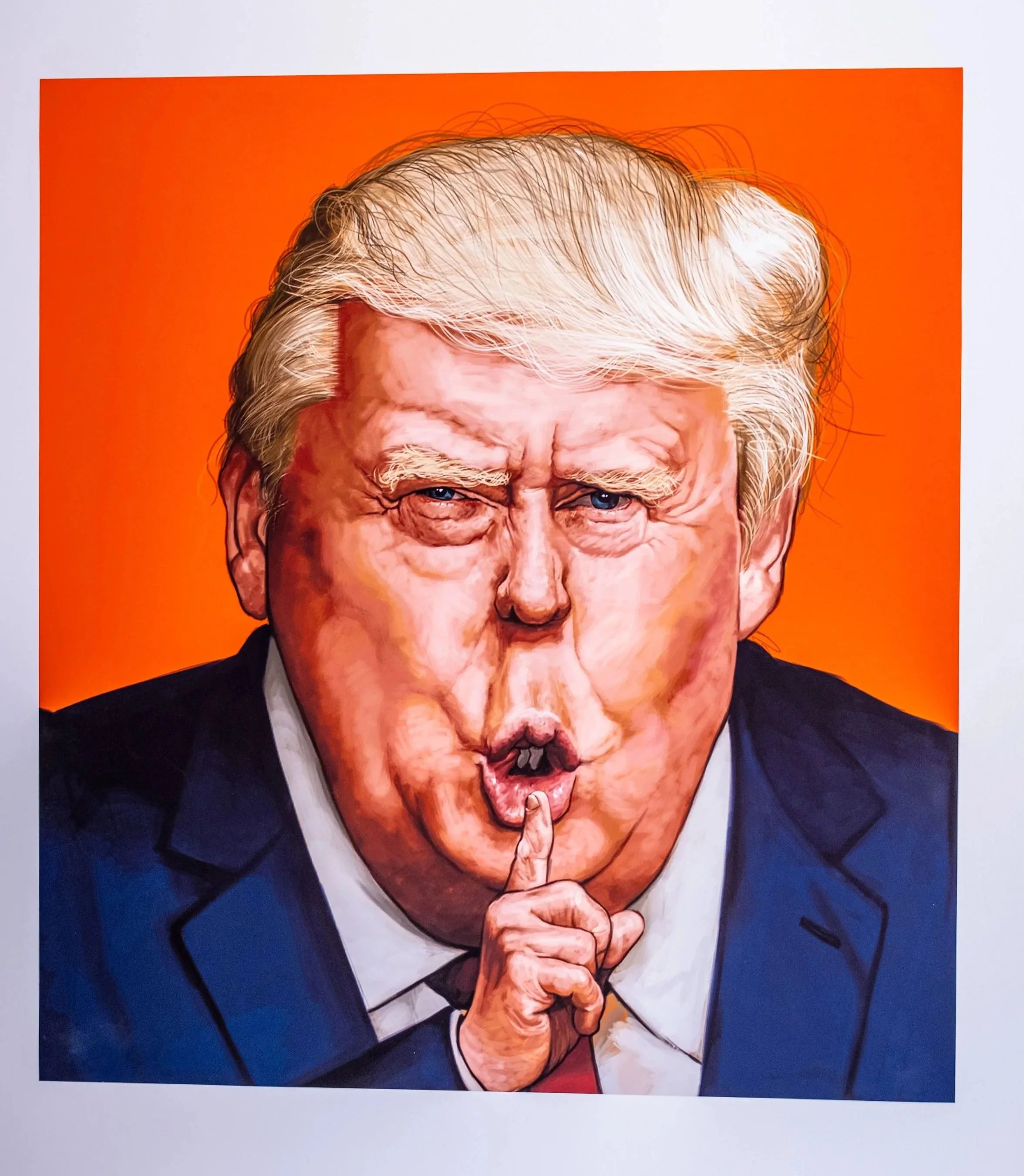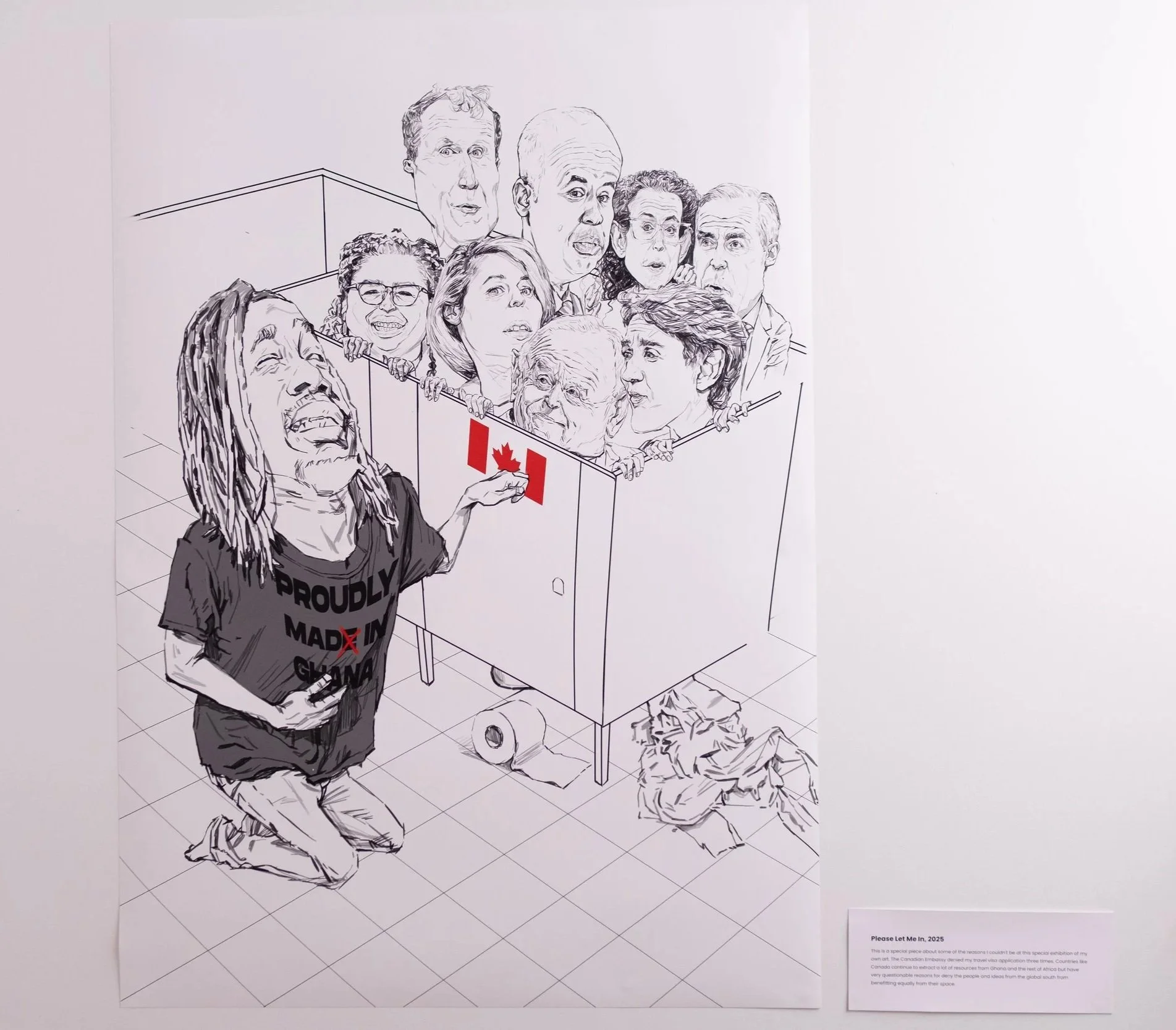Bringing Bright Ackwerh’s “Cartoons from Accra” to Life: Correspondence of an amateur curator
/This blog post documents an insider’s perspective of the set-up for political cartoonist and artist Bright Ackwerh’s first North American art exhibition, Cartoons from Accra: Memoirs of Politics and Activism from Ghana and Beyond. My narrative is followed by a virtual gallery of Bright’s pieces from the exhibition, so everyone can share in this project.
Based in Accra, Bright creates cartoons that bring to the surface the unspoken and unseen worlds of postcolonial politics, activism and extractive capitalism in Ghana and beyond. Over the last 10 years, Bright’s political cartoons have documented the ways in which Ghana’s elite are involved in an extractive politics, Africa’s postcolonial ties with former US and European countries, the role of China in Africa, and various activist responses to these issues. In response to the gatekeeping practices of elite-owned and state-influenced media, Bright’s cartoons tell important stories that are either left out of state narratives or media agencies are too afraid to tell.
To learn more about the inspirations behind Bright’s work, his process, and the themes explored in this exhibition, you can view a recording of an art talk held ahead of the exhibition featuring Bright and moderated by long-time collaborator and anthropologist Dr. Joseph Oduro Frimpong.
Dr. Girish Daswani and I (Taylor Stark), in collaboration with Bright, organized this exhibition, which ran from May 6th to 11th, 2025, in downtown Toronto. It was funded by the generous support of the Jackman Humanities Institute Program for the Arts.
The big day began with a visit to Smokestack Studios to pick up the beautifully printed posters of Bright’s artwork. From there, Girish and I travelled to Akin Collective’s Remote Gallery, where the exhibition was being hosted.
We met up with Renato Baldin, a wonderful gregarious Brazilian artist who manages the gallery and would prove absolutely essential in guiding Girish and I through the intricacies of exhibition set-up about which, on my part at least, we were woefully naïve. Shortly after we were joined by Adetona Omokanye, an internationally renowned photographer based in Toronto, who, when not roped into photographing gallery openings, produces anticolonial documentary photography around capitalist extraction, social and activist movements, and the celebration of West African culture. His keen photographic eye is featured throughout this post.
With a 10 am meet time, we were left with 8 hours of set-up time before our guests would start arriving for the evening reception and opening of the exhibition. Plenty of time, surely. We quickly fell into a rhythm: stare at wall; measure wall; measure wall again; unroll the next piece; sticky-tack the heck out of it; line up piece on wall—no, that’s not straight—line up again; step back—I don’t think that’s straight; re-measure—it’s definitely not straight; remove and reapply piece—it’s still not straight; okay, no, now I think we got it. Only 11 pieces left to put up!
Time passed in blur, caught up in the warm scratch of paper on wall, the snap of the tape measure, and the requisite pauses when I stepped back and was caught by the rich colours and intricate linework of Bright’s artwork, full size and tangible now after months of only being seen through my computer screen.
All images courtesy of Adetona Omokanye.
Green tape became an invaluable tool for spacing out posters along the wall, though not infallible—somehow our measurements never did quite what we wanted them to…
…in spite of our copious discussions about width.
And the omnipresence of multiple tape measures.
Because it didn’t feel right to show Bright’s work through glass, we opted to display the pieces as posters. Sticky-tack seemed like a natural choice for installation. While it functioned without fail for the week in which the art was up, and resulted in a superbly easy takedown, what we didn’t anticipate was the impact this would have on our thumbs. Hundreds of globs later, I wasn’t feeling so smug about our budget solution.
Another side effect of the sticky-tack resulted in numerous bulges under the poster; but as the traditional saying goes “many hands make slightly quicker work of flattening putty” [sic].
It was more pleasant to linger in front of some pieces than others.
A brief moment of existential despair as Girish begins to administer sticky-tack to yet another piece.
Despite the sticky-tack and our growing exhaustion, there was a relaxed feeling in the air, supported by the warm reverberations of our voices as we bantered in the open gallery and our quiet pleasure as the shared labour of our hands brought something new into the world. As a mostly computer-bound academic, I rarely get to feel such a palpable sense of satisfaction at seeing something I had a part in spring into existence in front of me. I wish more days were like this one.
With a final piece (installed in the bathroom), we were almost done! Finishing touches included aligning information placards (more sticky-tack!?)…
setting out stickers and a guestbook (purchased down the street with mere minutes before the beginning of the reception)…
And a final flurry of outdoor advertising. I especially love how the huge windows of the gallery gave a wonderful sneak-peak at the artwork.
Though some pieces were perhaps more inviting to passers-by than others.
After last minutes rushes for refreshments and plates, the doors swung wide and guests started arriving for the exhibition’s opening reception.
Bright was unable to attend his own exhibition because the Canadian government denied his visa application three times, despite letters of support from Girish and the JHI. Nevertheless, we managed to bring him into the festivities.
This rejection is emblematic of a wider problem of Africans not receiving visas to study in or to visit Canada. Girish has previously written about the high level of rejections of international visa applications for students coming to Canada from the African continent.
Our gallery space quickly became packed with friends new and old.
Even spilling out onto the street!
Though it was hard to resist returning inside for the wide selection of kelewele, bofrot, and fried yams generously catered by Michelle Cobblah at Minicah Creations.
Bright’s artwork in turn brought joy…
Intrigue…
And maybe even a touch of unease.
Amidst the conversations and the weight of the day, sometimes it was important to stop and breathe. Girish, standing in the centre of all Bright’s pieces and a packed room, takes in the fruits of his hard work.
All too soon, the reception was wrapping up. The extra food was sent off with the graduate students, goodbyes and congratulations were offered, libations were poured for our missing artist, and the exhibition opened for the week in earnest.
Many, many thanks to all the guests and attendees who made this exhibition so special. Special thanks to Renato Baldin (and Akin Collective more generally) for opening up their space to us and spending the whole day patiently walking us through set-up, as well as to Adetona Omokanye for his wonderful documentation of the process. Above all, our massive appreciation to the Jackman Humanities Institute for their generous funding, and to Bright Ackwerh, who trusted us to show his hilarious, incisive, and stunning art to the people of Toronto.
Virtual Gallery
Next, I present below the pieces from the exhibition, with accompanying descriptions written by Bright.
Journey to the East, 2020
This painting was inspired by the Forum on China-Africa Cooperation meeting of 2018. I was intrigued at how much power the government of China had to be able to summon almost all the African heads of state and regional bodies including those who governed their individual countries in absentia and as such hadn't been back home for years.
Ghana's President Nana Akufo-Addo leads the charge like George Washington in the original classic by painter Emanuel Leutze, which this is parodying. It also alludes the classic Chinese TV series Journey to the West which was one of the TV series I grew up on.
We Dey Beg, 2017
The Ghanaian government in 2017 had to beg the Chinese diplomatic community in Ghana to obey the laws of the land or have the decency to not get involved in indiscriminate mining practices. This would become a starting point for me for an ongoing exploration of a complex series of stories involving the nationals of the two countries and the true nature of their cooperation and bilateral agreements.
Atewa Titanic, 2020
Condensing several narratives and influences from social media conversations and popular films into one, I highlight some crucial aspects of Ghana’s new mad rush for easy gold locally called 'galamsey'.
The Ghanaian government planned to destroy Atewa forest for US$2 billion of mined bauxite which it committed to China. Ghana’s presidents (John Mahama and Nana Akufo-Addo) are depicted in an embrace, while four musicians (representing Ghanaian politicians) continue to play music even as the ship is sinking.
Occupation, 2018
I thought young Africans were too focused on the banter on social media about who made the best Jollof rice between Ghana, Nigeria and Senegal. The cartoon depicts these heads of state preoccupied while China’s President Xi Jinping sneaks away with the African continent.
This ongoing debate which has created a huge demand for the rice dish is largely unimportant as there are crucial problems and issues going on in the background that could use some more noise and attention.
My Boos and Me, 2022
Inspired by true events at the Global Citizens Festival in Accra when Ghanaian President Nana Akufo-Addo was booed while speaking on stage. This drawing presents an account of civil disobedience as activist statement.
Another Galamsey Story, 2024
Several high-ranking government officials in Ghana have been identified as key cogs in the 'galamsey' wheel which has poisoned almost all the water bodies in Ghana and rendered them unsafe. Because of this political backing, state security agencies are unable to end the canker nor prosecute the arrested culprits involved. Rather, concerned citizens who have hit the streets in protests to express their disapproval about this crime have been met with violence from the police through unlawful arrests and detention.
Tank Person, 2021
Inspired by the lone brave tankman from the 1989 Tiananmen Square protests that revolutionized China, I imagined a lone young man who bravely stands in the way of state sponsored violence against queer Ghanaians who don't wish to live according to popular convention of what a Ghanaian should be.
In 2021 an anti-LGBTQI+ bill was proposed in parliament. Formally called The Promotion of Proper Human Sexual Rights and Ghanaian Family Values Bill, it sought to explicitly criminalize LGBTQI+ identities and anyone who supported or advocated for the queer community in Ghana.
Nativity Scene, 2017
The cold grip France still holds on its former colonies in Africa doesn't look like it's going to easily be let go. For example, the CFA franc is the main currency used by fourteen West African countries.
I allude to the biblical narrative of the adoration of the wise kings to tell this story. This painting has also become one of the subtle accounts that has spread awareness on a true historical injustice in Africa and has exposed systematic censorship as the European nation remains a strong sponsor of the creative art ecosystem in Ghana.
Nkrumah MAGA, 2020
What would happen if the acronym from the infamous red cap meant something else for Africa? Kwame Nkrumah was the first President of newly independent Ghana, whose promises of anti-colonial freedom included all Africans including the black diaspora. The symbolism of the cap in politics today makes this drawing a controversial one.
Shhhhhh, 2020
Donald Trump is a poster child for everything that a decent politician shouldn't be. Under his presidency, the US has become a fascist regime that has increasingly cracked down on free speech and anti-authoritarian resistance. His recent threats to the governments of many countries are another proof of this.
Shhhhh, I'm not allowed to say anymore.
The Son’s Tear, 2017
Drawing allusions between popular political news and Christian biblical doctrine I wanted to tell this human story about how betrayed Colonel Muamar Gaddafi of Libya must have felt after his life was taken for trying to establish his country’s economic autonomy against the wishes of America and her allies.
It also was my depiction of what many African people on the continent felt about Barack Obama’s historic government and what its ultra militaristic legacies are.
Deadly Prey I, 2025
I imagined what South African politician Julius Malema would do had he seen Elon Musk’s infamous Nazi salute in person.
The two characters had after all been engaged in some heated banter on Elon’s social media app X.
Please Let Me In, 2025
This is a special piece about some of the reasons I couldn't be at this special exhibition of my own art. The Canadian Embassy denied my travel visa application three times. Countries like Canada continue to extract a lot of resources from Ghana and the rest of Africa but have very questionable reasons for deny the people and ideas from the global south from benefitting equally from their space. [poster was placed in the bathroom of the gallery]
